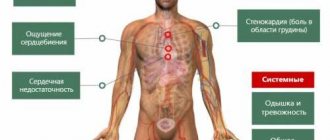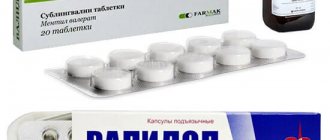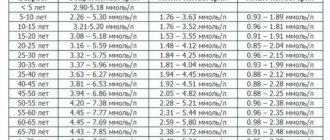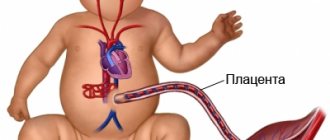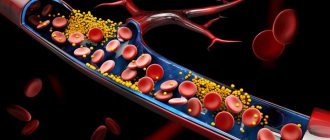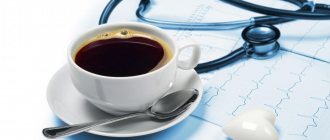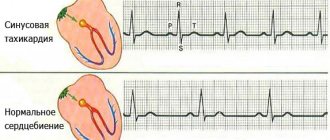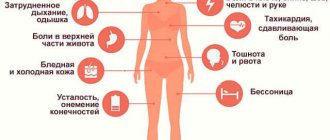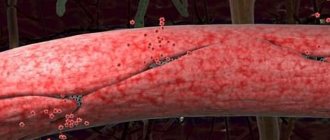Tachycardia, or rapid heartbeat, is a common condition. It can develop at any age, normally or pathologically. At the same time, the attitude towards her is ambiguous.
Some people overestimate its danger and, at the slightest increase in heart rate, try to call an ambulance. Others, on the contrary, do not pay due attention to it and, in the absence of pronounced symptoms, do not try to fight it.
Whose side is the truth on? Is tachycardia dangerous for humans, and what exactly is its danger?
General characteristics of the condition
We can talk about the presence of tachycardia in cases where the heart rate increases 20% above normal. In adults, this is more than 100 beats per minute.
The leading objective indicator that allows you to determine the presence or absence of tachycardia, including at home, is the pulse on the radial artery. Even those people who do not know how to determine it with their hands can estimate this indicator using an electronic device for measuring blood pressure.
Doctors also focus on other parameters: they directly listen to heart sounds and also determine the heart rate using an ECG.
Tachycardia can occur acutely, in the form of a kind of attack, or it can exist in a chronic form and last for months and years. It may have any subjective manifestations, or it may be asymptomatic against the background of good health.
We list the possible signs of tachycardia:
- Heartbeat
- Dyspnea,
- General weakness
- Dizziness,
- Fainting.
During attacks of tachycardia, these symptoms develop suddenly and their intensity is more pronounced. A person begins to feel contractions of the heart, and these sensations are frightening and very unpleasant. It becomes difficult for him to breathe air, shortness of breath appears. Naturally, general weakness immediately arises.
Oxygen deficiency leads to dizziness or even loss of consciousness.
In a chronic situation, the body is more adapted to the increased work of the heart, so the person does not faint and can even continue to do some work. However, unpleasant sensations can arise here too.
In addition, the insidiousness of such constant tachycardia is that it significantly increases the load on the heart and sooner or later can result in symptoms of chronic heart failure.
Why is heart rate deviation scary?
The danger of tachycardia lies in the development of additional pathologies of the cardiovascular system, since any disturbances (both acceleration of the rhythm and its deceleration - bradycardia) in the work of the heart wear out a vital organ and impair its functionality.
Frequent occurrence of tachycardia can lead to the following complications.
Thromboembolism
A type of blockage of blood vessels by a blood clot separated from the wall of the heart. The resulting clot enters the aorta and, as a result of blood circulation, passes to any organ.
The syndrome appears suddenly, affecting the blood vessels of the heart, brain, lungs, intestines and legs, which can lead to disability or death.
Myocardial infarction
A condition caused by coronary artery thrombosis.
The main symptom of a heart attack is pain in the heart and inner part of the left arm. The patient feels a tingling sensation in the fingers and wrist. Reference! A heart attack affects people who lead a sedentary lifestyle or are under constant stress.
Cardiogenic shock
Extreme degree of heart failure resulting from impaired contractility of the left ventricle. At the initial stage, the symptoms of cardiogenic shock are similar to those of a heart attack, but over time the patient develops lethargy, body temperature rises, and pulmonary edema is possible.
Ventricular fibrillation (flickering)
A terrible condition that threatens life and is characterized by irregular contraction of muscle fibers (from 300 to 500 beats per minute). Fibrillation leads to cardiac arrest and clinical death, so during an attack a person needs the help of a specialist.
Sudden cardiac death
Non-traumatic cardiac arrest due to the development of certain cardiac pathologies. Manifestations of SCD include absence of pulse in the great vessels and blood pressure, dilated pupils, and pale skin.
The main mechanism of SCD is ventricular fibrillation, which provokes a violation of the pumping function of the heart.
Pulmonary edema
Syndrome caused by left ventricular failure. During an attack, the left side of the heart does not accept blood, which causes it to accumulate in the vessels of the lungs. The pressure in the tissues gradually increases, preventing gas exchange, and excess fluid sweats into the cavity of the alveoli. With edema, the patient experiences symptoms such as wheezing in the lungs, shortness of breath, and profuse sweating. The skin turns sharply blue, foamy pink sputum appears.
Fainting or syncope
A short-term loss of consciousness is a sign of a lack of oxygen due to impaired contractile function of the heart. The patient's muscle tone decreases, the facial skin takes on an earthy tint, and the pupils react poorly to light. If the condition lasts more than five minutes, seizures may occur.
Dizziness, weakness and blurred vision become harbingers of syncope.
Asthenia and weight loss
Frequent attacks of tachycardia lead to a lack of nutrients and oxygen to the organs. The body weakens, muscle mass growth stops, vitamin and mineral complexes are not absorbed, immunity is suppressed, and mental disorders appear.
A person suffering from asthenia feels tired, becomes irritable and restless.
Types of tachycardia
There are two main types of tachycardia: physiological and pathological.
Physiological tachycardia occurs in response to activation of the sympathetic nervous system. In response to any stimulus, adrenaline is released into the blood, and the pulse quickens for a while.
The role of such irritants is:
- Physical exercise;
- Severe stress;
- Drinking drinks high in caffeine;
- Taking certain medications;
- A number of diseases and pathological conditions (diseases accompanied by a significant increase in temperature, acute surgical pathologies, hyperfunction of the thyroid gland, decreased blood sugar, shock, etc.).
In these cases, tachycardia is temporary and quickly disappears after the cause is eliminated. If it occurs infrequently and in response to really intense exercise, then there is nothing to worry about. Such tachycardia is absolutely safe, and every person faces it. This is fine.
Of course, if the cause of physiological tachycardia is any disease, then it cannot be ignored; it needs treatment. But in this case, it is the disease itself that can be dangerous, and not the tachycardia. In such situations, it is only a symptom that reflects the overall severity of the condition.
Pathological tachycardia, unlike physiological tachycardia, occurs without visible external causes. As a rule, one or another heart pathology leads to it. And such tachycardia is very dangerous.
It can also be divided into several types.
Sinus form
Strictly speaking, sinus tachycardia is not always pathological. The normal physiological reactions of the body to certain stresses are manifested precisely by sinus tachycardia.
However, here we will talk about a pathological situation when an increase in heart rate occurs at rest, for no apparent reason, and persists for a long time. It occurs when the sinus node of the heart is damaged, or when there is an imbalance in the autonomic nervous system.
Pathological sinus tachycardia is characterized by a gradual increase in heart rate and its further smooth decrease. It never has a paroxysmal course and does not pose an immediate danger to human life.
However, if palpitations, even asymptomatic ones, persist for a long time, then it leads to chronic overload of the heart, which is extremely undesirable. In this regard, pathological sinus tachycardia requires constant treatment.
As a rule, in such cases, drugs from the group of beta-blockers are prescribed in low doses. At the same time, it is not recommended to take them on your own without the recommendation of a doctor: only he can select the right drug and determine the regimen for its administration.
Paroxysmal form
The paroxysmal form, in contrast to the sinus form, is characterized by the sudden onset of attacks, and the heart rate in it often exceeds 140 beats per minute. In some cases, it can pose an immediate threat to life.
Paroxysmal supraventricular tachycardia is more benign. In young women and men, it can be asymptomatic or have a single manifestation in the form of palpitations.
In severe situations, it is accompanied by a drop in blood pressure, cold hands and feet, and sweating. The attacks last from several seconds to several hours and can stop spontaneously, or during a reflex action, without the help of medications.
Frequent and prolonged attacks lead to poor circulation and the appearance of congestion.
Paroxysmal ventricular tachycardia is the most dangerous. It can lead to acute heart failure, arrhythmogenic shock, ventricular fibrillation and cardiac arrest.
Thus, its development is very dangerous in terms of sudden death and requires emergency medical attention. At the same time, a person experiences a feeling of fear, often experiencing heart pain, muscle cramps, dizziness, nausea and vomiting.
An attack of ventricular paroxysmal tachycardia can also stop on its own, but waiting for this is dangerous. It is better to stop it immediately by administering special medications.
Thromboembolism
When the heart rate is abnormally high, turbulence is formed in the blood flow. Disruption of normal blood flow is accompanied by the destruction of a certain number of red blood cells and subsequent activation of the coagulation system. A clot formed in the cavity of the heart enters the aorta and can travel through the bloodstream to any organ. Blockage of a vessel by a thrombus or thromboembolism leads to acute hypoxia of the affected organ or part thereof. The most susceptible to thrombosis are:
- Arteries of the brain;
- Intestinal arteries;
- Arteries of the limbs;
- Pulmonary artery.
- Splenic artery.
The consequences of thromboembolism depend on the functions of the affected organ and the speed of providing appropriate medical care. Thrombosis of the vessels of the extremities can lead to the need for amputation; blood clots in the vessels of the brain cause stroke. With pulmonary embolism, the risk of death is very high.
Cardiologists identify several risk factors for blood clots:
- Elderly age;
- Diabetes;
- Prolonged attacks of tachycardia such as atrial fibrillation (48 hours or more);
- Arterial hypertension;
- Heart failure;
- Dilated cardiomyopathy;
- History of thromboembolic episodes.
It is believed that these factors are more related to pathological types of tachycardia, but their presence is a good reason for correcting the patient’s lifestyle. The mechanism of an overly violent physiological reaction to physical activity and emotional shocks does not exclude the possibility of thrombosis. Due to the potential threat of this complication, frequent attacks of tachycardia should be visited by a cardiologist.
Is tachycardia life-threatening?
Any pathological tachycardia carries a potential danger to life. The only question is what is the degree of this danger.
If the tachycardia is constant, sinus and chronic, then there is no immediate threat. However, the feeling of security in this case is very deceptive. Such tachycardia will slowly but surely deplete the heart's resources and ultimately lead to serious heart disease. Therefore, it requires close attention.
It is necessary to observe a doctor as planned and follow all his recommendations.
Paroxysmal tachycardia, especially ventricular tachycardia, is already an emergency problem. It can lead to dire consequences not someday “later,” indefinitely, but right here and now. Any such attack can result in the death of a person.
Why is tachycardia dangerous? Is it possible to die from it? Consequences of tachycardia
Tachycardia - an increase in the rhythm of the heart muscle - affects both adults and children. It is precisely because of the prevalence of this pathology that the question often arises of whether tachycardia is dangerous and what exactly this condition threatens human health and life.
Types of tachycardia
The pathological form of tachycardia is divided into the following subtypes.
Sinus form
In order for the heart to function normally, a nerve impulse from the sinus node is necessary. It consists of cardiac tissue, has an oblong shape, and sets the heart rhythm.
If the functionality of this node is impaired, the heartbeat accelerates.
The cause of the pathological change in the sinus node lies in the presence of heart disease and may be present in heart failure, ischemia, and myocarditis.
Paroxysmal form
If the sinus node is functioning normally, but the heart rate still increases, this indicates that the signal is being distorted. Such disorders are caused by a malfunction of certain parts of the heart. Therefore, the paroxysmal form of tachycardia is divided into two more subgroups, depending on which department distorts the supply of impulses:
- Atrial tachycardia indicates the creation of its own signals in the atrioventricular node. Feature – the attack begins and ends suddenly, there is no arrhythmia. The heart rate ranges from 160 to 220 beats/min. The duration of atrial paroxysmal tachycardia is varied - from several minutes to several hours. The main reason: deficiency of potassium and calcium, lack of oxygen, disruptions in the functioning of the endocrine system, changes in the chlorine content in the body.
- The ventricular type of tachycardia occurs against the background of excessively rapid contraction of the lower chamber of the heart, since there is no complete filling with blood. Feature: arrhythmia is present. The maximum contraction frequency is 300 beats. There is a risk of developing ventricular fibrillation. This leads to wear and tear of the heart fibers and death. The main cause of ventricular paroxysmal tachycardia: inflammatory heart disease (ischemia, defect), taking glycoside drugs for a long time.
Is tachycardia life-threatening?
The danger of tachycardia lies primarily in the fact that it leads to the development of other pathological disorders in the cardiovascular system. Why is this happening? It turns out that the disturbed rhythm of the heart wears it out, slows down blood circulation, which impairs the functionality of the heart muscle.
If the heart beats quickly, the blood does not have time to pump, so oxygen does not reach the organ, which leads to a decrease in blood pressure. Against this background, such serious pathologies develop as ischemia not only of the heart, but also of the brain, ventricular fibrillation, etc.
Diseases develop rapidly, leading to death.
Tachycardia can lead to a number of diseases in which there is a risk of complications:
- With increased contraction of the heart muscle, blood flow is disrupted, which leads to the formation of thromboembolism. This occurs due to the destruction of red blood cells and activation of the blood clotting process. Thus, a clot forms in the cardiac cavity, which penetrates the main aorta, clogging the vessel. Then acute hypoxia develops. Blood clots can be located in any part of the body. With tachycardia and thromboembolism, there is a risk of the formation of trophic ulcers, stroke and death.
- In the presence of coronary heart disease and simultaneous tachycardia, oxygen consumption by the myocardium occurs in excessive doses. As a result, the volume of cardiac output is disrupted, which develops hypoxia. This oxygen deprivation leads to cell death in the myocardium, followed by a heart attack.
- With prolonged tachycardia, insufficiency often develops in the left cardiac ventricle, which disrupts the functionality of the valves in the great and aortic vessels. Blood stops flowing into the general circulation. This leads to a sharp decrease in blood pressure - cardiogenic shock appears. Critically low blood pressure leads to death.
- Sudden cardiac death occurs against the background of fibrillation.
- Due to the fact that blood circulation is disrupted during tachycardia, pulmonary edema develops.
- If sudden fainting occurs with frequent tachycardia, this leads to unexpected injury, since the patient does not know at what second he may lose consciousness.
- Due to a lack of oxygen during tachycardia, all metabolic processes are disrupted and the immune system is suppressed. This entails a general weakening of the body, further infection, and rapid weight loss.
Acute complications may not occur with every attack of pathological tachycardia. There are a number of long-term consequences that develop over a long period of time and do not have symptoms in the initial stages and do not manifest themselves in any way.
Pathological tachycardia is considered life-threatening because its consequences are severe, even fatal. Pathological tachycardia always occurs against the background of disturbances in the functioning of the heart.
If attacks of heart rhythm disturbances are present occasionally, this indicates the initial stages of the development of the disease. If they are permanent, you should immediately contact a cardiologist.
The main consequences of tachycardia:
- Development of heart failure. The disease develops slowly, so it can be prevented in the initial stages.
- Impaired conduction of the heart, which causes many different pathologies of the cardiovascular system.
- The formation of ischemic stroke against the background of thromboembolism in the vessels of the brain.
- Rapid wear and tear of the muscular system of the heart, as pathology leads to increased stress and lack of nutrition to the heart. Because of this, the elasticity of the tissues of this organ decreases.
- Oxygen starvation leads to disruption of the functionality of all internal systems and organs.
- The development of cardiac asthma entails arrhythmic shock.
- The onset of death. It can be sudden.
Consequences of pathology
Let us once again list the possible consequences of tachycardia for humans:
- Chronic heart overload;
- Development of coronary heart disease;
- The appearance and progression of heart failure;
- The occurrence of acute complications such as shock or pulmonary edema;
- Sudden death from cardiac arrest.
They are all very formidable. This suggests that the presence of tachycardia cannot be ignored under any circumstances. As a rule, with timely examination and treatment, most of them can be avoided.
It should be remembered that tachycardia is a serious signal that should never be ignored. If frequent interruptions in the heart function occur, you should definitely contact a therapist or cardiologist, and if a sudden attack occurs, you should immediately call an ambulance.
Fainting
Strictly speaking, fainting is not even a complication of tachycardia, but is one of the accompanying symptoms that can lead to dire consequences. Loss of consciousness during a sudden attack of tachycardia occurs without a gradual deterioration of the condition. With rapidly emerging acute hypoxia, loss of consciousness can occur within several tens of seconds from the onset of the attack. Unexpected loss of consciousness due to an attack of tachycardia is one of the causes of domestic and industrial injuries, as well as road accidents.
Tachycardia in children
Fortunately, pathological tachycardia in children is a relatively rare phenomenon. As a rule, it occurs only in those who have congenital heart pathologies, such as:
- Heart defects;
- Anomalies of the coronary arteries;
- Congenital dysplasia of the heart muscle (when it is partially replaced by connective or fatty tissue);
- Heart tumors.
Also, the appearance of tachycardia in childhood can be triggered by injury, taking certain medications, or metabolic disorders.
Children and adolescents who experience attacks of tachycardia must undergo a comprehensive examination by a cardiologist. As a rule, their tachycardia is just the tip of the iceberg, behind which lies deeper heart problems that require an early solution.
When tachycardia attacks occur in children, the likelihood of sudden cardiac death is less than in adults. However, you should not take risks: if the attack does not go away within a few minutes, it is better to call an ambulance as quickly as possible.
Sudden cardiac death
Sudden cardiac death refers to cases of death within 6 hours from the onset of the first cardiogenic symptoms. Rapid death in most cases is a consequence of ventricular fibrillation.
An attack of tachycardia such as ventricular fibrillation quickly leads to acute heart failure and disturbances in the pumping function of the heart. An almost complete cessation of blood pumping leads to stagnation in the bloodstream and increasing general hypoxia. Due to severe oxygen starvation, necrotic changes develop in the myocardium and brain tissue.
Signs of sudden death:
- Stopping breathing;
- Absence of pulse, including the carotid artery;
- Sudden loss of consciousness;
- Pupil dilation.
This complication requires immediate resuscitation with artificial respiration and the use of a defibrillator to restore normal heart rhythm.
Tachycardia in the fetus
The question of why tachycardia is dangerous in the fetus is also very popular.
If it occurs sporadically, lasts no more than an hour, and the fetal heart rate has high variability, then there is nothing to worry about: most likely, the examination coincided with his “wakefulness” phase, and his tachycardia is physiological. In such cases, it is usually absent during repeated examinations.
In addition, tachycardia in the fetus may be a consequence of the mother taking certain medications, such as beta-agonists or atropine.
However, increased heart rate in the fetus also occurs in pathological situations, the most common of which is intrauterine hypoxia.
At the same time, heart rate variability is low, and tachycardia is almost constant. This situation is very dangerous: it can lead to intrauterine growth restriction of the fetus or even its death.
Therefore, when pathological tachycardia is detected in the fetus, obstetrician-gynecologists immediately begin to search for and eliminate the cause of this condition.
Causes and varieties
Physiological processes and various diseases of the cardiovascular and other systems can lead to increased heart rate. Having understood the causative factors, you can understand whether tachycardia is dangerous. The physiological increase in rhythm, which is a compensatory reaction to excessive physical overload, a stressful situation, smoking, and consumption of caffeine-containing drinks, does not cause serious damage to health.
On the contrary, tachycardia has adverse consequences when it is a symptom of various pathological processes. Often in this situation it aggravates the course of the underlying disease.
The following types of tachyarrhythmias are distinguished:
- Sinus
- Paroxysmal supraventricular (supraventricular)
- Paroxysmal ventricular
Associated with increased automatism of the sinoatrial node, which leads to an acceleration of heart rate in the range of 90–160 per minute. It is often compensatory in nature. However, it is observed in non-coronary (anemia, excessive drug intake, hyperfunction of the thyroid gland) and cardiac (myocarditis, cardiopathy, coronary heart disease) nosologies.
Patients are concerned about palpitations, general malaise, dizziness, and chest pain, although in most cases sinus tachyarrhythmia is asymptomatic.
Therapy includes eliminating provoking factors, prescribing medications, and carrying out reflex measures.
The negative consequences of sinus tachycardia are associated with deterioration of blood supply in the coronary bed. This naturally increases the myocardial need for oxygen, which leads to disruption of metabolic processes in myocardial fibers.
Prevention of tachycardia
There is no special prevention of tachycardia. We can only give general recommendations on maintaining a healthy lifestyle and being attentive to your health.
First of all, you should eliminate smoking, limit alcohol consumption, and start doing moderate physical activity. You should also try to maintain a daily routine and avoid excessive stress.
If attacks of tachycardia have already occurred in the past, or a person has a constant increase in heart rate, then it is imperative to visit a doctor.
You may need to take certain medications on a regular basis to help keep your heart rate at a normal level and also help prevent attacks. In this case, compliance with medical recommendations is the most important preventive measure.
It is necessary to remember what is dangerous about tachycardia, what complications it gives, and what threatens a person who ignores frequent increased heartbeat.
When the first signs of pathological tachycardia appear, you should not try to cope with them yourself. This can be very dangerous. In such cases, there is no need to be afraid of visiting a doctor.
Prevention
In order to prevent the development of pathological tachycardia, it is necessary to adhere to simple rules:
- Lead a healthy lifestyle - stop drinking alcohol and smoking;
- play sports;
- breathe fresh air;
- eat right;
- give yourself enough time to sleep and rest;
- do not delay treatment of diseases leading to tachycardia.
Tachycardia has two types - physiological and pathological. The first is not dangerous, but the second can lead to death. To avoid undesirable consequences, you should promptly seek qualified help from the clinic in case of any heart rhythm disturbances.
Forecast
P
The given characteristics make it possible to understand what tachycardia is and why it is so dangerous for life.
It is customary to distinguish life-threatening tachyarrhythmias, that is, those that have a high risk of death. These include:
- Paroxysmal supraventricular with a number of contractions of 250 per minute or more
- Paroxysmal supraventricular with a number of beats over 180 per minute against the background of Wolff-Parkinson-White syndrome
- Paroxysmal ventricular tachyarrhythmia over 30 seconds
The result of such disorders is acute circulatory failure, cardiogenic shock, and death.
What is tachycardia
Tachycardia is a heart rhythm disorder characterized by increased heart rate. If on average the heart contracts 80 times per minute when a person is lying down and 100 times when standing, then exceeding these indicators signals tachycardia. It is customary to distinguish between 2 types of tachycardia – physiological and pathological. The first is when the heart rate increases during and after sports and other physical activities, under stress or at high temperatures. If the heartbeat increases without objective reasons or against the background of primary disorders, pathological tachycardia is diagnosed, which goes beyond the norm.
Is it possible to die from tachycardia
The heart is a very important organ in the human body. It supports the functioning of all internal organs, intensively pumping blood, which contains oxygen and all the necessary microelements.
The heart should not be underestimated, because at the slightest malfunction in its work, all other processes occurring in the human body are disrupted.
On average, the heart rate of a healthy person varies from 60 to 90 beats per minute.
A significant increase in heart beats indicates a health problem, and in medicine this phenomenon is given the name tachycardia.
It can occur during severe fright or psycho-emotional stress, but there are a number of other reasons. Let's take a closer look at how tachycardia can be dangerous and how it manifests itself.
- All information on the site is for informational purposes only and is NOT a guide to action!
- can give you an ACCURATE DIAGNOSIS !
- We kindly ask you NOT to self-medicate, but to make an appointment with a specialist !
- Health to you and your loved ones!
Most often, tachycardia makes itself felt not as an independent disease, but more as a symptom.
A rapid heartbeat can be one of the body’s peculiar reactions to both external factors and internal processes. For example, heart rate increases during physical exertion, activation of the nervous system, and in cases where substances that contribute to this manifestation enter the human body.
Sometimes a response in the form of a rapid heartbeat can be due to smoking or alcohol abuse, a sedentary or, conversely, an active lifestyle. Such tachycardia is physiological and does not pose a particular threat to human health and life. This is how our nervous system reacts to certain stimuli and natural processes occurring in the body.
Often all the signs of tachycardia are observed in young children and adolescents, this only happens because the young body is actively developing; tachycardia can also result in an imbalance in the endocrine and other systems.
In pregnant women, tachycardia can also appear suddenly, and this is due to the fact that hormonal changes occur in the body of the expectant mother, all internal organs are forced to work at full capacity to ensure the normal development of the fetus.
Often, people suffering from vegetative-vascular dystonia also experience unpleasant symptoms in the form of increased and rapid heartbeat at the slightest excitement, the occurrence of anxious thoughts, etc. This is why many people wonder whether it is possible to die from tachycardia?
Heart problems and heart palpitations can be caused by excessive caffeine consumption, as well as medications that affect heart function.
What to do
During an attack of tachycardia, patients experience panic, shortness of breath and a feeling that the heart is about to jump out of the chest. At the same time, blood pressure may rise, the pulse may increase, and you may feel short of breath.
With such symptoms, you need to take a comfortable position, it is best to lie on your back and perform breathing exercises. Sometimes taking tinctures of valerian, motherwort, and Corvalol helps to calm down.
The following methods effectively help relieve symptoms of tachycardia:
- you can pour cold water into a basin and dip your face in it for a couple of seconds;
- Drinking plenty of cold water can also alleviate the patient’s condition;
- you need to try to calm yourself down, telling yourself that nothing serious is happening, tachycardia is not life-threatening, and soon all its symptoms will pass;
- Deep breathing will also help get rid of an attack, which consists of taking deep breaths through your nose and slow, drawn-out exhalations through your mouth, and you need to repeat this breathing exercise several times for 10-15 minutes;
- if the methods described above do not help, you can take any sedatives, for example, herbal remedies with a sedative effect;
- If the symptoms do not go away for a long time, you cannot calm down, it is recommended to call an ambulance.
What is the danger of cardiac tachycardia of different forms?
Typically, tachycardia of a physiological nature does not require immediate drug treatment. However, this symptom can significantly worsen a person’s life, causing him to worry about his health.
Often, when a patient goes to a doctor, no abnormalities in the heart are detected. To clarify the diagnosis of tachycardia, it is necessary to undergo an examination, an ECG, and other diagnostic measures.
However, in some cases, serious disturbances in the functioning of the heart may be detected, which not only cause anxiety, but are also accompanied by a number of other unpleasant symptoms. A particularly alarming sign can be considered an increase in heart rate up to 200 or more beats per minute, as well as the frequent occurrence of tachycardia attacks per day.
The more often tachycardia occurs, the more suspicion there is that something is wrong with the body. And ordinary excitement develops into panic and fear for one’s own life. But is this condition dangerous?
Experts say that the nature of the manifestation of tachycardia and its danger to the health and life of the patient primarily depend on its form.
Source: https://starlab-mdc.ru/bolezni-serdtsa/tahikardiya/mozhno-li-umeret-ot-tahikardii.html
Consequences of the disease
If tachycardia attacks are ignored, the patient experiences complications, many of which can lead to exacerbation of existing heart ailments and serve as an impetus for the development of new ones. Paroxysmal tachycardia has the most serious consequences, such as myocardial infarction and angina. Having felt sharp and pressing pain in the heart area, the patient should measure the pulse, and if it exceeds 140 beats, immediately call an ambulance. In addition to these ailments, angina pectoris leads to the following consequences:
- rapid wear of the myocardium;
- ischemic stroke;
- pulmonary edema, oxygen starvation and cardiac asthma;
- thromboembolism of cerebral vessels;
- ventricular fibrillation and, as a consequence, death.
The danger of atrial tachycardia is suddenness: an emotional outburst, heavy lifting, or stress can trigger an attack. There is an increased tendency to such a symptom in people suffering from vegetative-vascular dystonia and arrhythmia. For the risk group, the chances of complications and death are twice as high, so heart rate control is a vital aspect for them.
Diagnostics
Early and timely detection of rhythm disorders allows one to avoid high mortality from cardiovascular diseases, which is especially important among people of working age.
And these are not empty words, since current trends indicate an increase in morbidity and mortality from coronary pathology.
You can find out why cardiac tachycardia is dangerous in each specific case using:
- Complaints
- Anamnestic information
- Inspection
- Instrumental examination
The sick person always has a complaint of palpitations, rapid heart rate.
During the examination, an abnormal heart rate and pulse deficiency are detected. Electrocardiographic diagnostics and 24-hour Holter monitoring allow us to figure out what kind of tachycardia has occurred and whether it is dangerous. A cardiogram is informative in the case of persistent arrhythmia, and when short runs are noted, Holter monitoring is more reliable.
The diagnostic search is supplemented with ultrasound examination, computed tomography, and laboratory tests to determine the cause of the rhythm disorder.
Diagnosis of tachycardia
To prescribe the correct treatment, it is important to accurately determine the cause of tachycardia. To do this, the patient undergoes the following examinations:
- A cardiogram is performed throughout the day to determine the nature of the symptoms. For this purpose, a portable recorder is used, which is attached to the patient’s body.
- An electrophysiological examination is performed on a stationary treadmill or exercise bike. The body's reaction to a particular physical activity is revealed.
- An MRI is done to evaluate the condition of the heart. Measure the size of the ventricles and myocardium. Atherosclerotic plaques are detected in the vessels. Determine cardiac anatomy, pumping function, and valve function.
- An x-ray is performed. A contrast agent is injected. The condition of the coronary vessels and the degree of filling of the arteries of the heart are assessed. There are areas of myocardial ischemia.
- A complete blood test will help detect anemia.
- Additionally, examination of internal organs and the brain may be prescribed.
Only after a complete study can appropriate therapy be prescribed.
Treatment of tachycardia
The question of how to get rid of tachycardia will be answered by a cardiologist based on a comprehensive examination. The main treatment measures can be divided into three groups:
- Maximum reduction of external influences: emotional stress, physical activity, tonic drinks, bad habits.
- Use of medications: antiarrhythmic drugs, sedatives, antipsychotics, beta blockers, glycosides. These drugs lower blood pressure, relieve emotional and physical stress, normalize pulse, and improve heart nutrition.
- Surgical intervention: elimination of the affected area using open surgery or minimally invasive intervention, installation of a pacemaker.
To relieve an attack of tachycardia, use a solution of Lidocaine, which is administered intravenously. The following drugs can be used: Verapamil, Diltiazem, Novocainamide. To reduce the load on the heart, beta blockers are used, which reduce mortality from cardiovascular diseases several times. If the pulse has increased as a result of severe stress, then sedatives such as Corvalol, Validol, and Valocordin are suitable.
If the cause of tachycardia is disturbances in the endocrine system, then the help of an endocrinologist will be required. Treatment of the adrenal glands will be required: corrective or surgical.
First aid for tachycardia before the doctor arrives is as follows:
- the patient should lie down in a well-ventilated area;
- you need to try to take a deep breath and hold your breath for 5 - 6 seconds;
- drink warm tea with lemon balm, motherwort or valerian;
- take a Validol or Nitroglycerin tablet under the tongue;
- take thirty drops of Corvalol or Valocordin.
Causes of tachycardia
Medical science has identified many factors that cause tachycardia. Physiological tachycardia is provoked by:
- stressful situations;
- physical activity;
- lack of oxygen in stuffy places;
- fever during illness;
- drinking invigorating drinks, spicy foods, drinking alcohol, smoking;
- influence of drugs.
Pathological tachycardia may appear due to the following diseases:
- ischemia, angina pectoris, heart attacks, heart defects, cardiosclerosis;
- malignant tumors;
- disorders of the thyroid gland;
- atherosclerosis, anemia;
- neuropsychiatric disorders;
- disturbances in brain functioning;
- severe pain attacks;
- hypertensive crisis;
- asthma and other lung diseases;
- diabetes.
The causes of tachycardia in women are complemented by hormonal characteristics and high emotionality. In men with coronary heart disease, the symptom of rapid pulse occurs twice as often as in the fair sex.
Cardiovascular diseases, against which tachycardia occurs, pose a serious danger. In such cases, the heart is forced to contract at a higher frequency. In this case, the atria, ventricles and myocardium are unable to provide sufficient release of blood into the arteries. This leaves many organs in a state of blood deficiency (ischemia). If such conditions occur regularly, the cells are damaged and irreversible processes begin. In addition, constant overload of the myocardium leads to its rapid wear. Tachycardia often precedes myocardial infarction. Untimely assistance can lead to irreparable consequences.
Cardiac tachycardia: symptoms, diagnosis and treatment
sh: 1: –format=html: not found
If the heart beats abnormally fast, it is tachycardia. Palpitations are not a disease - it is either a physiological condition of the body or a symptom of one of many diseases. The portal davlenie.org tells how to determine that you have tachycardia.
The sinus node is located in the heart muscle, which regulates the rhythm of heart contractions. The sinus reacts sensitively to any external and internal stimuli.
Therefore, the heartbeat quickens when excited, under stress, when the ambient temperature or body temperature rises, when there is severe blood loss, when quickly climbing stairs, and in other cases.
This is a manifestation of normal physiological tachycardia.
Cardiac tachycardia: what is it? Normally, in an adult, the heart beats about 60-80 times per minute. The diagnosis of “tachycardia” is made when this indicator increases to 100 or more compressions in 60 seconds.
In some cases, the pulse beat during tachycardia exceeds 190-230 beats per minute.
Such an abnormal heartbeat greatly wears out the heart, causes oxygen starvation of the entire body and fainting weakness in the patient.
Pathological types of tachycardia include sinus and paroxysmal.
Sinus tachycardia, what is it, and how to treat the disease?
Photo: PantherMedia/Scanpix
In some cases, the sinus node begins to malfunction, causing the heart to beat faster than necessary. The heartbeat accelerates to 140-180 beats per minute.
This is not a disease, but a certain state of the body, which will be normalized if harmful living conditions are eliminated, sleep and nutrition are improved, and bad habits are abandoned.
Sinus tachycardia occurs in various situations:
- with a lack of potassium or magnesium in the body;
- for fatigue and chronic insomnia;
- being in a stressful state for a long time;
- in acute painful conditions of the body (poisoning, infectious disease, dangerous blood loss, etc.).
Treatment of sinus tachycardia consists of taking sedatives and herbal remedies and establishing a gentle diet and rest.
In cases where palpitations cause the patient to feel faint, antiarrhythmic drugs are prescribed.
Paroxysmal tachycardia
Paroxysmal tachycardia is a dangerous condition for the body, which in many cases requires emergency medical intervention and hospitalization of the patient.
During paroxysmal tachycardia, the functions of the sinus are performed by another part of the heart: the ventricles or atrium. In this case, the likelihood that the sinus node will “straighten” the heart rhythm is reduced, and the attack can last for days.
The patient is administered antiarrhythmic drugs. In severe cases, it is necessary to perform shock therapy of the heart with an electrical discharge. Under the influence of an electric current, the heart stops and starts working again. In most cases, after an electric shock, the sinus resumes normal heart function.
Paroxysmal tachycardia occurs as a manifestation of heart disease.
Ventricular tachycardia appears when there is an abnormal condition of the heart muscle: sclerosis, atrophy, necrotia, the appearance of scar tissue (myocarditis, coronary artery disease, heart defects, myocardial infarction, etc.).
Supraventricular tachycardia is a sign of disorders in the sympathetic nervous system.
Treatment of paroxysm of tachycardia is carried out in a hospital, since urgent resuscitation measures may be required.
Causes
Photo: Shutterstock
Physiological tachycardia accompanies violent emotional states, fast running, climbing to heights, etc.
Sinus tachycardia appears as a reaction to various painful conditions of the body:
- neuroses and depressive states;
- poisoning;
- thyrotoxicosis (abnormally increased levels of thyroid hormones in the body);
- pheochromocytoma (tumor in the adrenal glands);
- oxygen starvation;
- heart diseases;
- high body or environmental temperature;
- dangerous blood loss.
Paroxysmal tachycardia appears when the functioning of the heart and blood vessels is disrupted:
- vegetative-vascular dystonia;
- myocarditis;
- myocardial infarction;
- ischemia;
- hypertension;
- heart disease;
- disturbances in the sympathetic branches of the nervous system.
Tachycardia requires treatment if it appears without any obvious reason: the person feels well and is in a calm state or is sleeping.
What symptoms warn of danger?
- Shortness of breath (difficulty breathing);
- dizzy;
- noises appear in the head and ears;
- darkens in the eyes;
- fainting weakness, loss of consciousness;
- heartache.
The patient needs to call an ambulance, and before it arrives he should:
- free your neck and chest;
- open the window;
- apply cold to forehead;
- wash with ice water.
Diagnostics
Photo: PantherMedia/Scanpix
Only a cardiologist can determine how to treat cardiac tachycardia. It is useless to treat tachycardia itself - the cause of the increased heartbeat should be eliminated.
To diagnose the underlying cause of the disease, a number of examinations are prescribed:
- ECG (daily Holter, 2-3-day monitoring);
- blood and urine tests;
- analysis to determine the content of thyroid hormones;
- Ultrasound of the heart to detect abnormalities in the structure of the heart or its parts;
- echocardiography.
Treatment
To eliminate tachycardia, treatment is carried out for a disease that causes increased heartbeat.
It is recommended to establish a gentle regime:
- A full night's sleep of at least 8 hours.
- Refusal of every bad habit, including drinking strong tea or coffee.
- It is better to eat 5 times a day, little by little. Preference is given to simple low-fat foods and greens.
- Nervous fatigue and anxiety should be avoided.
- You can take herbal decoctions with a calming effect: valerian, motherwort, mint, hawthorn.
During an attack of tachycardia, which is accompanied by painful symptoms, antiarrhythmic drugs are taken: Etatsizin, Finoptin (Verapamil, Isoptin), Ritmilen (Ritmodan), Reserpine (Rausedil, Raupasil), Raunatin (Rauvazan).
If tachycardia occurs, you should undergo a medical examination to rule out a serious illness.
Source: https://rus.delfi.lv/woman/zdorovje/zdorovje/tahikardiya-serdca-simptomy-diagnostika-i-lechenie?id=47656663&all=true
